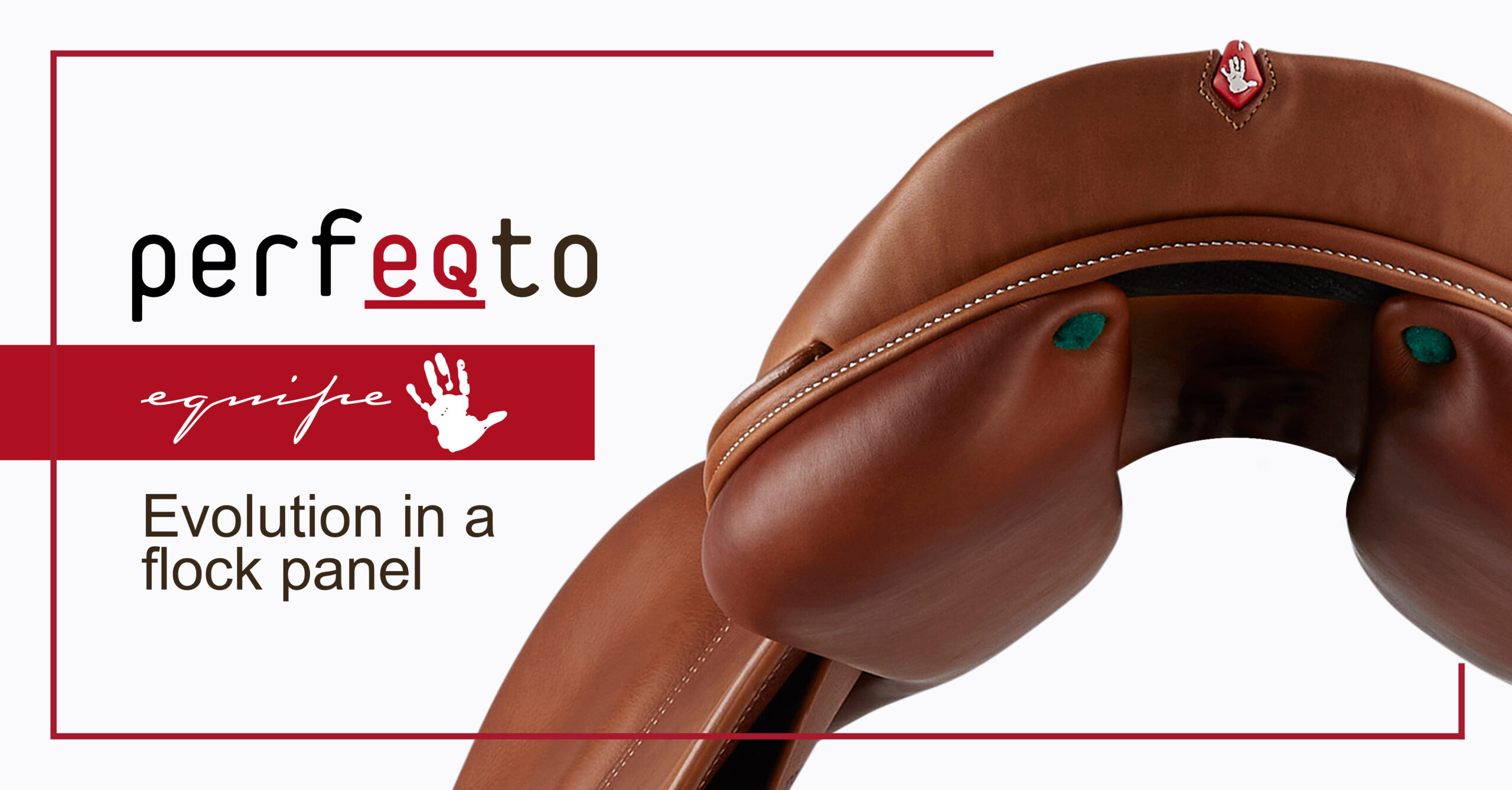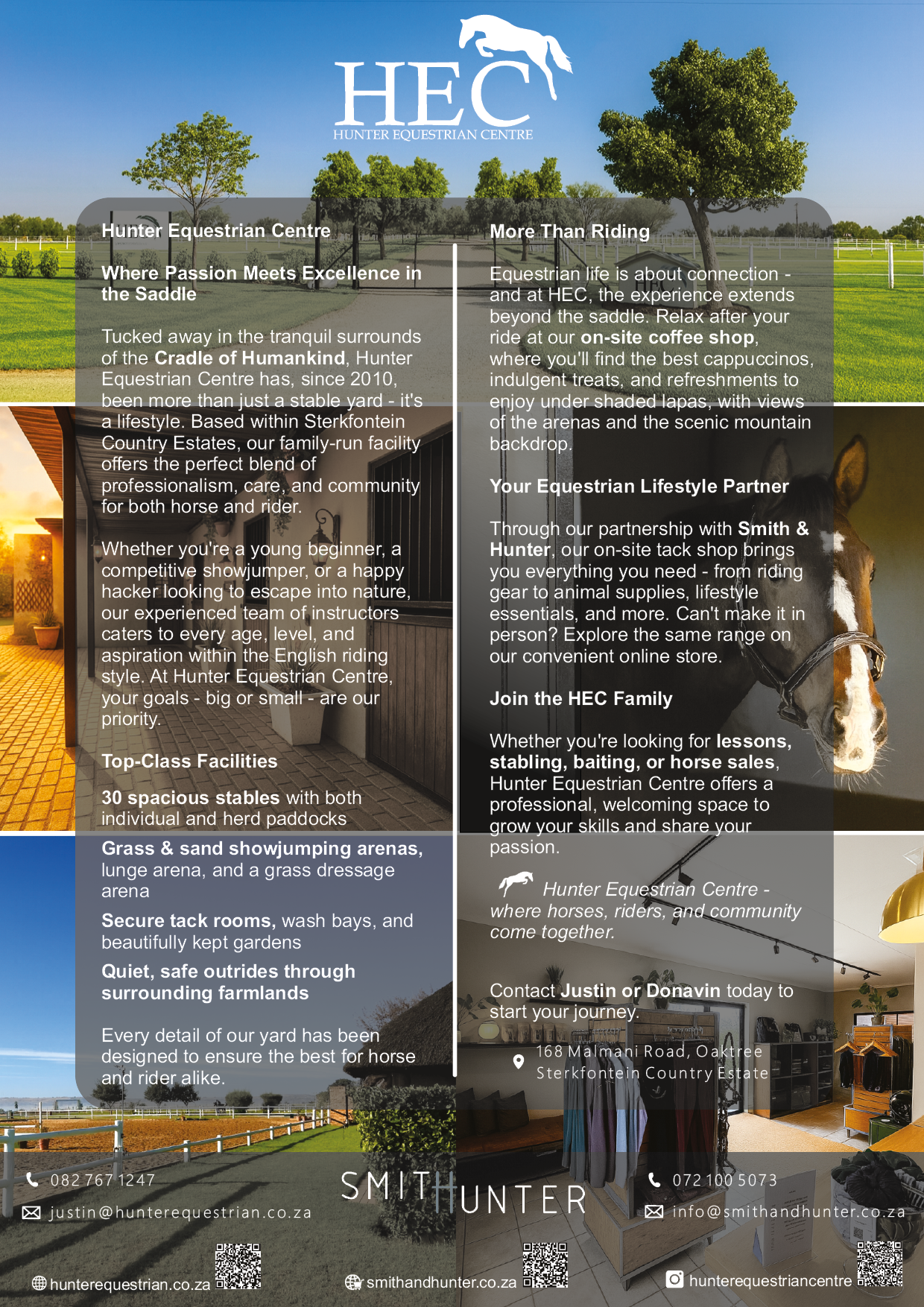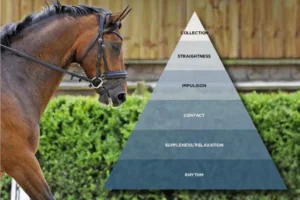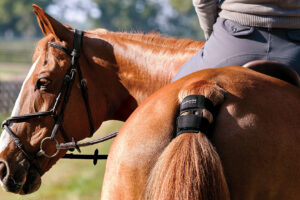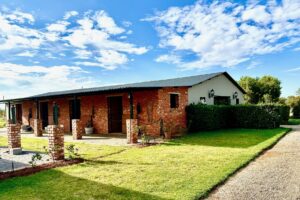Imagine standing gracefully on the back of a moving horse, arms outstretched, poised in harmony with every stride. This is vaulting – a breathtaking equestrian discipline often described as “dancing on horseback.” Combining athleticism, artistry, and teamwork, vaulting is more than just a sport; it’s an art form that embodies trust and connection between vaulter, horse, and lunger.
For Joanna Goeller, President of Vaulting South Africa, this discipline holds endless potential. “Vaulting is a unique sport that teaches balance, strength, and harmony with the horse. It’s both challenging and rewarding,” she shares.
But how does it work, and why should more people consider taking it up? Let’s take a look at the world of equestrian vaulting.
Vaulting in South Africa: Challenges and Growth
Vaulting in South Africa has seen its share of ups and downs. “The sport goes through phases. We often see a lot of enthusiasm at the beginner levels like E Grade, where vaulting is done at the walk, but participation drops off as vaulters progress to the more difficult or higher grades where vaulting is done at the canter. The higher levels demand more time, effort, and dedication,” says Joanna.
Currently, the majority of South African vaulters compete at E Grade, which is accessible and performed at the walk, making it ideal for newcomers. However, participation drops significantly in higher grades, with only three vaulters presently qualified at the elite Two Star level and one at the Three Star level.
Despite these challenges, vaulting in South Africa is gaining momentum, thanks to initiatives like hosting regular local provincial and national competitions, as well as international competitions, such as the upcoming CVI (Concours de Voltige International) scheduled for March 2025. Recently, countries like Zimbabwe and Zambia have expressed interest in coming to participate in South African vaulting shows. These efforts reflect the sport’s growing appeal and its potential to expand regionally.
One of the sport’s unique challenges is its reliance on grassroots efforts. Parents play a pivotal role in organising shows, managing logistics, and even maintaining websites. While this committee-driven approach is admirable, Joanna envisions a future where administrative tasks can be managed in a similar fashion to the other equestrian disciplines, so that more focus can be placed on outreach and development of the discipline.
Another challenge, according to Joanna, is access to vaulting horses. Vaulting requires a special type of horse – one that is patient, balanced, well-schooled, obedient and capable of maintaining a steady rhythm under the guidance of a skilled lunger.
The Road to Austria: Junior World Vaulting Championships 2025
The upcoming Junior World Vaulting Championships in Stadl-Paura, Austria, from July 30 to August 3, 2025, marks a significant milestone for South African vaulting. This prestigious event, which gathers the world’s best junior vaulters, requires athletes to compete at Two Star levels and meet the FEI age requirement of being in their 14th year but not older than 18 which is junior.
The locally hosted international CVI competition in March 2025 will allow local athletes to compete with the aim of achieving ‘qualifying scores’ for the World Championships. “The CVI in March is a game-changer,” Joanna explains. “We have about 15 vaulters aiming to qualify for Austria. That’s a record for us and shows just how far the sport has come.”
The CVI will feature four international judges, adding a layer of prestige and excitement. Events like these not only prepare South African vaulters for the world stage but also inspire younger athletes to dream big, creating a ripple effect that could elevate the sport nationwide.
Why Vaulting?
Vaulting offers a unique blend of physical and creative challenges, making it an excellent entry point into equestrian sports. For children, it’s a safe and engaging way to build confidence and core skills. For adults, it’s a chance to stay fit, develop discipline, and experience the unparalleled bond between horse and rider.
“Vaulting teaches you to trust the horse, move in harmony with it, and express yourself in ways that other equestrian disciplines don’t,” Joanna says.
Beyond its physical and technical aspects, vaulting is also about fun and camaraderie. From dressing up in costumes to creating themed routines with music, the sport offers a chance to be both artistic and playful. “The kids love it. They enjoy putting on makeup, dressing up, and supporting each other—it’s all part of what makes vaulting special.”
Vaulting South Africa also works closely with SANESA (South African National Equestrian Schools Association) to promote the sport at schools and events. Many vaulting shows are dual-registered, allowing participants to earn points with both SANESA and Vaulting South Africa.
The Structure of Vaulting Competitions
Vaulting is a true team effort, with horse, lunger, and vaulter working together to deliver a flawless performance. Each competition consists of two rounds: the compulsory round and the freestyle round.
Compulsory Round: Vaulters perform a set sequence of movements, such as kneeling, sitting, standing, and swings, designed to demonstrate strength, balance, and precision. These routines are scored out of 10 by a panel of four judges, who evaluate consistency and technique across all competitors.
Freestyle Round: Creativity takes centre stage in this round. Vaulters design their own routines, set to music, and often incorporate costumes and themes to enhance their artistic expression. Freestyle routines are also judged out of 10, with difficulty and execution playing a major role in the final score.
In both rounds, the horse is a critical part of the performance. One judge specifically evaluates the horse’s rhythm, reliability, and the lunger’s skill in maintaining a steady and controlled pace.
The Levels of Vaulting: From Walk to Canter
Vaulting is designed to accommodate participants of all ages and abilities, offering a clear pathway for progression through its grading structure. As Joanna explains, “The sport grows with you, starting at entry-level E Grade and advancing to the elite Three Star level.”
E Grade: The starting point for most vaulters, this grade is performed entirely at a walk. It is accessible for beginners and focuses on building confidence, balance, and harmony with the horse.
D Grade: This grade introduces canter work, with compulsories performed at the canter and freestyle remaining at the walk. It’s a manageable but exciting step up for vaulters ready to develop their skills.
C Grade to Three Star: At these levels, vaulters perform both compulsories and freestyle at the canter. Routines become more advanced, incorporating high-difficulty elements such as handstands, jumps, and dynamic sequences. Scoring also accounts for the degree of difficulty, making these grades both challenging and rewarding.
Pairs and Squad Vaulting: Vaulters can compete in pairs or squads (teams of six). These categories emphasize synchronization and teamwork, with multiple vaulters performing intricate movements together.
Each grade comes with its own challenges and milestones, as Joanna notes, “Progressing through the levels requires dedication, strength training, and a lot of practice. But it’s incredibly rewarding.”
Get Involved
Whether you’re a budding gymnast, an experienced equestrian, or simply curious about trying something new, vaulting has something for everyone. With its growing community, exciting events, and opportunities to compete internationally, there’s never been a better time to get involved.
South Africa’s upcoming CVI and participation in the Junior World Championships are perfect opportunities to witness the magic of vaulting firsthand. Attend a competition, join a class, or simply spread the word – vaulting is a sport worth celebrating.
As Joanna passionately puts it, “Vaulting is not just a sport; it’s an experience. It’s about trust, teamwork, and pushing boundaries. And once you’ve seen it, you’ll be hooked.”
Visit www.vaultingsa.co.za if you want to enjoy the freedom of vaulting.



